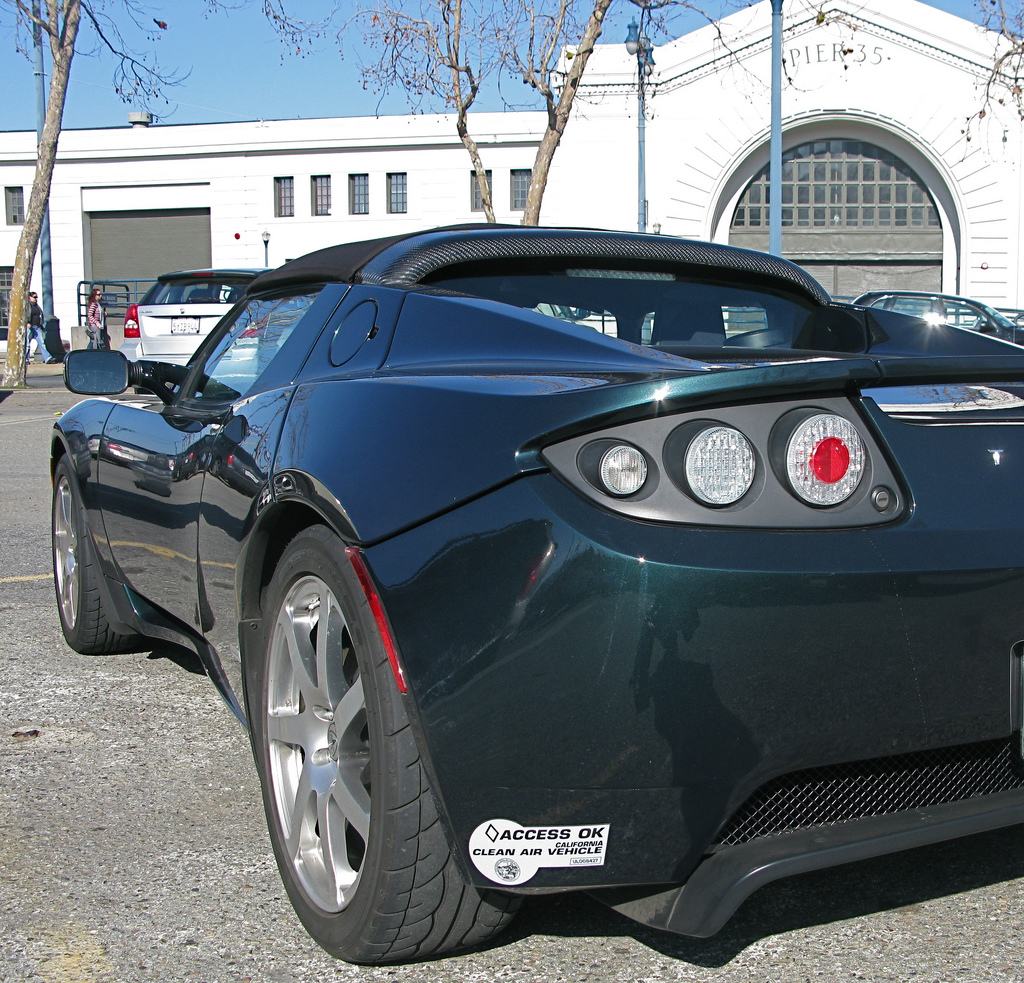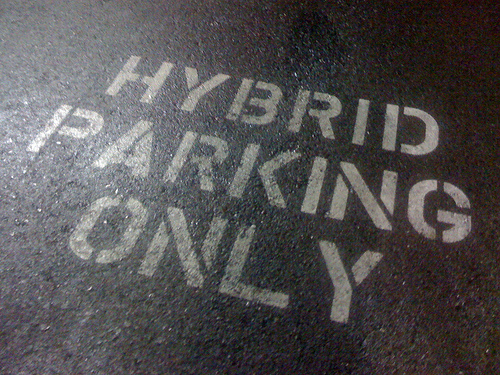You may remember that in California, 85,000 lucky owners of three hybrid vehicles were granted special stickers giving them access to High-Occupancy Vehicle lanes, even with only a single occupant in the car.
Well, their luck runs out on December 31, the last day those stickers are valid. While Governor Arnold Schwarzenegger signed a bill yesterday that extends certain HOV-Lane Access stickers for four more years, the ones for hybrids aren't included.
Instead, the extended stickers apply only to far less common green vehicles: Fully electric cars (including the Tesla Roadster and 2002 Toyota RAV4 EV), and those that run on natural gas (e.g. the Honda Civic GX) or hydrogen (a la the 2010 Honda FCX Clarity).

Tesla Roadster with CA Clean Air Vehicle sticker -- flickr user jurvetson

Toyota RAV4e electric vehicle, San Francisco, March 2010
Those vehicles have white HOV Access stickers, while the three eligible hybrids--the 1999-2006 Honda Insight, the Honda Civic Hybrid, and the Toyota Prius--stickers are yellow. And those yellow stickers still expire on December 31 of this year.
That impending expiration caused howls of protest earlier this year by the 85,000 lucky hybrid owners. But hybrids' success may have worked against them: Hybrids of all models are now almost 3 percent of overall U.S. vehicle sales, but considerably more in California.
In June 2009, insurance-claim processor Audatex calculated that one of the three models with an HOV-Access permit was worth $1,200 to $1,500 more than one without. Presumably that value has declined steadily as expiration approached.
The measure (AB 1500) signed yesterday by the Governator was one of several so-called Prius Perks, which many commentators expect to be superseded by similar perks to encourage purchase of plug-in vehicles that are just coming into the market.
New battery electric cars, primarily the 2011 Nissan Leaf, already qualify for the newly extended white stickers.
But a separate California bill, SB 535, would extend HOV access both to plug-in hybrids (e.g. the 2012 Toyota Prius Plug-In Hybrid) and electric cars with range-extending gasoline engines (e.g. the 2011 Chevrolet Volt). That bill has not yet passed.
California's original goal was to reduce congestion, thereby encourage purchase and use of hybrid cars that used significantly less gasoline, reducing emissions of both tailpipe pollutants and greenhouse gases like carbon dioxide.
Extending the white permits through January 1, 2015, keeps at most a few thousand electric, natural-gas, and hydrogen vehicles in the HOV Lanes. Removing 85,000 hybrids, though, will free up space for electrics like the Leaf--and potentially the blended plug-ins too.
Plug-In America, an advocacy group that works to support and encourage plug-in vehicles, lauded the passage of AB 1500. The group has a list of current privileges for electric vehicles offered by 21 states and the District of Columbia.
Plug-In America is also working to build support for incentives at the Federal level, especially the Electric Vehicle Deployment Act (Senate Bill S 3442, House H.R. 5442).
For more detailed information on California AB 1500, see the text of the bill and the Legislative Analysis.

Hybrid parking spot, by Flickr user rscottjones













